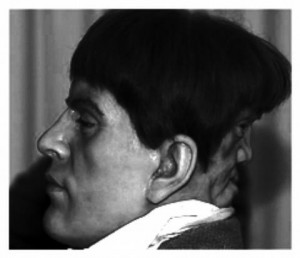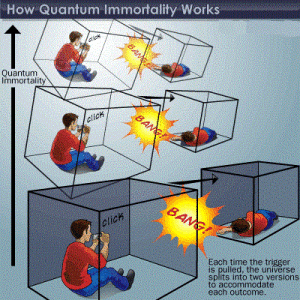 NOTE: If you have arrived here in search of Edward Mordrake photos, I’m sorry but no actual photos exist. The image that likely brought you here is a wax interpretation of Edward that was created long, long after his demise. Furthermore, the placement of his parasitic twin is near impossible and stands only as an artistic rendering. Of course, there is a very real kernel of truth to his story and there have been documented cases of two-headed boys, two-faced human curiosities, one-of-a-kind people and other unique individuals with unusual faces that you may find very interesting.
NOTE: If you have arrived here in search of Edward Mordrake photos, I’m sorry but no actual photos exist. The image that likely brought you here is a wax interpretation of Edward that was created long, long after his demise. Furthermore, the placement of his parasitic twin is near impossible and stands only as an artistic rendering. Of course, there is a very real kernel of truth to his story and there have been documented cases of two-headed boys, two-faced human curiosities, one-of-a-kind people and other unique individuals with unusual faces that you may find very interesting.
The true tale of Edward Mordake has been lost to history. His unusual case occurred early in medical history and is referenced only in tales handed down. The tale of his life has become so muddled through the passage of time that no solid date of birth or death is evident to modern researchers.
The story always begins the same way. Edward Mordake is said be have been heir to one of the noblest families in England.He was considered a bright and charming man – a scholar, a musician and a young man in possession of profound grace. He was said to be quite handsome when viewed from the front – yet, on the back of his head there was a second face, twisted and evil.
In some versions of the story, the second face of Edward Mordrake is a beautiful girl.This is an impossibility as all parasitic twins are of the same sex. Often it was said that it possessed its own intelligence and was quite malignant in its intentions.It has been said that the eyes would follow spectators and its lips would ‘gibber’ relentlessly and silently. According to legend it would smile and sneer as Edward Mordrake wept over his condition.While no voice was ever audible, Edward Mordrake swore that often he would be kept awake by the hateful whispers of his ‘evil twin’.
The story has always concluded with young Edward Mordrake committing suicide at the age of twenty-three.The method of his death also differs, sometimes poison does him in and in other versions a bullet ‘between the eyes of his devil-twin’ puts him out of his misery. In both versions Edward Mordrake leaves behind a letter requesting that the ‘demon face’ be destroyed before his burial, ‘lest it continues its dreadful whisperings in my grave.’
Is the story of Edward Mordrake true? The 1896 text Anomalies and Curiosities of Medicine mentions a version of the story and Edward has been featured in many texts, plays and even music as the Tom Waits song ‘Poor Edward’ is based on the story. However, the tale was considered false for quite some time. It was simply too fantastic to believe and, obviously, many parts of the story simply do not make medical sense – years of retelling warped what was likely a very real occurrence.
How can one make the assumption that there is fact beneath this tale?
 Chang Tzu Ping was discovered in China in the late 70’s or early 80’s. Chang had been born with a second face consisting of a mouth, a malformed tongue, several teeth, a patch of scalp, and the vestige of other facial constructs. The throat and the lips of the second face could not move independently, but the mouth did react in tandem to Chang opening his. Shortly after being discovered he was brought to the United States to have the second face surgically removed. The entire case was documented – including the surgery – on the 80’s television program ‘That’s Incredible’ – and yet there exists almost no secondary evidence of his existence. The operation was considered successful and Chang likely went home to his village to live the remainder of his life without his ‘devil face’.
Chang Tzu Ping was discovered in China in the late 70’s or early 80’s. Chang had been born with a second face consisting of a mouth, a malformed tongue, several teeth, a patch of scalp, and the vestige of other facial constructs. The throat and the lips of the second face could not move independently, but the mouth did react in tandem to Chang opening his. Shortly after being discovered he was brought to the United States to have the second face surgically removed. The entire case was documented – including the surgery – on the 80’s television program ‘That’s Incredible’ – and yet there exists almost no secondary evidence of his existence. The operation was considered successful and Chang likely went home to his village to live the remainder of his life without his ‘devil face’.
It does not require a great leap of faith to conclude that the tale of Edward Mordake is based on some nugget of fact, perhaps he had something similar Chang’s condition – mutated by storytellers over time. Consider that the case of Chang Tzu Ping is relatively unknown despite only occurring a few decades ago or the strange tale of The Boy of Bengal. These are indeed very rare cases and the human mind has a tendency to classify the unusual as impossible – it often helps us sleep well at night.
 A man sits down before a gun, which is pointed at his head. This is no ordinary gun; it’s rigged to a machine that measures the spin of a quantum particle. Each time the trigger is pulled, the spin of the quantum particle — or quark — is measured. Depending on the measurement, the gun will either fire, or it won’t. If the quantum particle is measured as spinning in a clockwise motion, the gun will fire. If the quark is spinning counterclockwise, the gun won’t go off. There’ll only be a click.
A man sits down before a gun, which is pointed at his head. This is no ordinary gun; it’s rigged to a machine that measures the spin of a quantum particle. Each time the trigger is pulled, the spin of the quantum particle — or quark — is measured. Depending on the measurement, the gun will either fire, or it won’t. If the quantum particle is measured as spinning in a clockwise motion, the gun will fire. If the quark is spinning counterclockwise, the gun won’t go off. There’ll only be a click.

